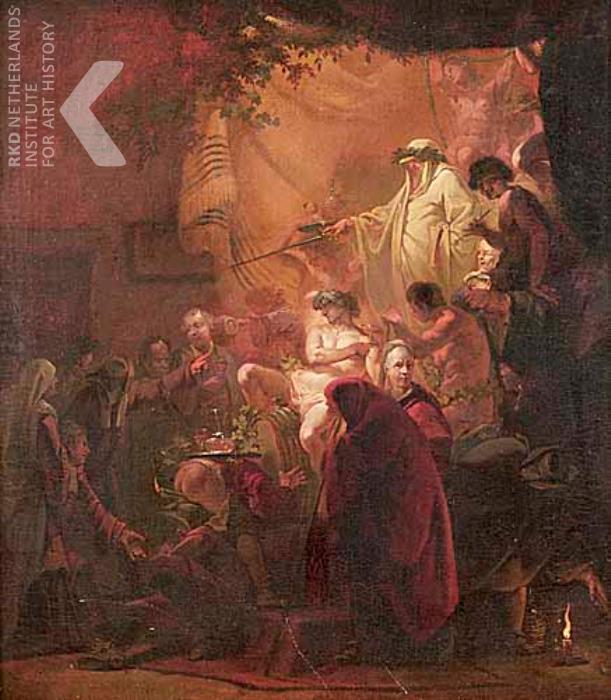 |
| Initiation of a member of the Bentveughels (the Schildersbent) |
 |
| The original painting (RKDimages) |
Print after a painting by Domenicus van Wijnen (1661-1698) (private collection), reduced in measures and mirrored in respect to the first copy by Matthijs Pool (1676-1740). According to Johan van Gool, Bonaventura van Overbeeck entrusted Pool with the engraving after a set of three paintings by van Wijnen, to ensure the immortality of the brotherhood and to please the lovers of the art of print. According to Tania De Nile (I Bassifondi del Barocco: La Roma del vizio e della miseria, exhib. cat., 2014, p. 164-165) this explains the precision with which faces of the participants and the features of the staged spectacle are reproduced. The present print reproduces the first painting of the series: a sort of 'tableau vivant' taking place in an inn, where the bentbrothers are dressed in antique attire, each of them playing a different role in the curious staged mythological pantomime preceding the initiation ceremony. The 'Veltpaap' (countryside priest) stands on the top left of the composition, crowned with laurel, pointing with his long sword in the direction of the newcomer, or 'Nieuwling' or 'Groentje' (literally 'the green youngster') introduced by a pander and another character holding a long halberd (the 'Switzer', or the Swiss).
On the bottom two columns of text in Dutch: 'De Roomsche Achilderbent, de Waareld door vermaart... Wort hy verwellekomt, met eerchooten aan den dis'; on the bottom address of Pool:'M. Pool exc: Amstelod: op de Leydse Graft by de Heeren Graft'.
Soon after the master of ceremonies had pronounced a series of precepts concerning the art of painting and the sacred statute of the company, the young artist would have sworn his loyalty in front of the other brothers. These would have replied with: 'Viva, viva, viva onzen nieuwe Medebroer!'. Bacchus would have been present to the ceremony, seated on a barrel, as he was the protector of the brotherhood. Below on the right one brother is lighting a firecracker which refer to one of the tests the newcomers had to take to enter the brotherhood. (De Nile).
